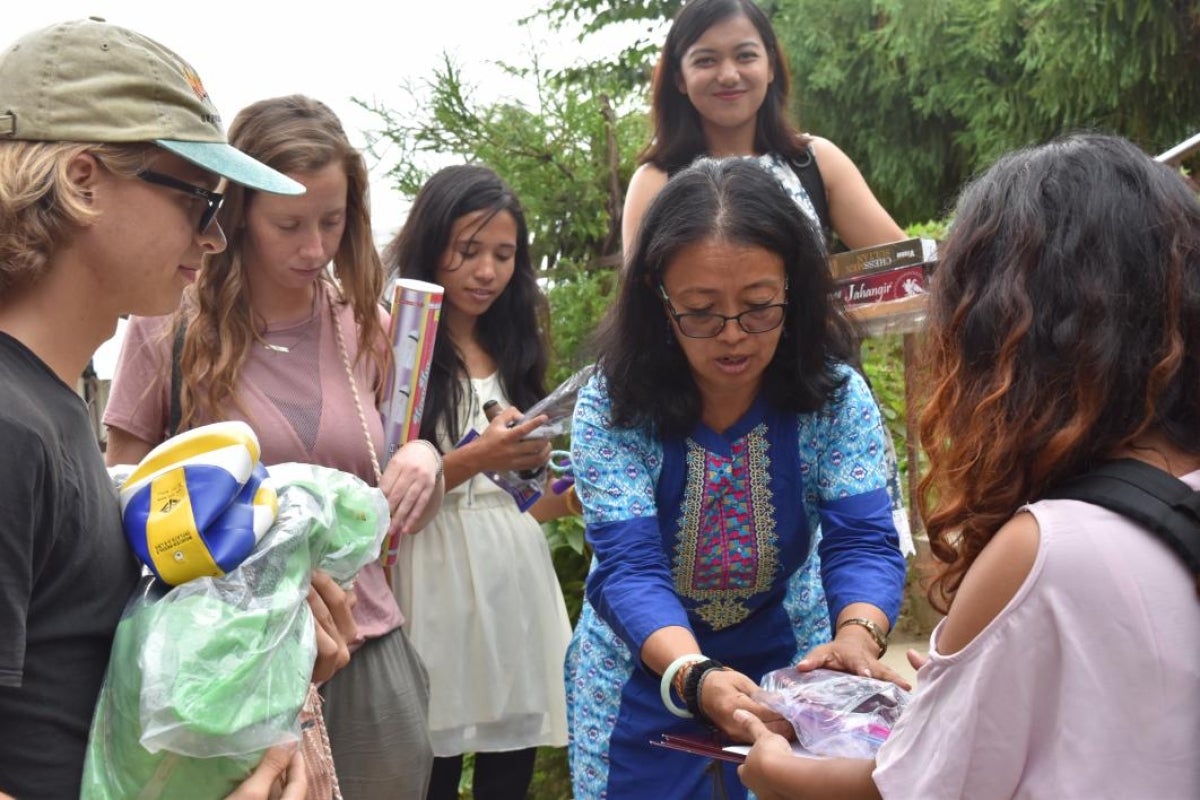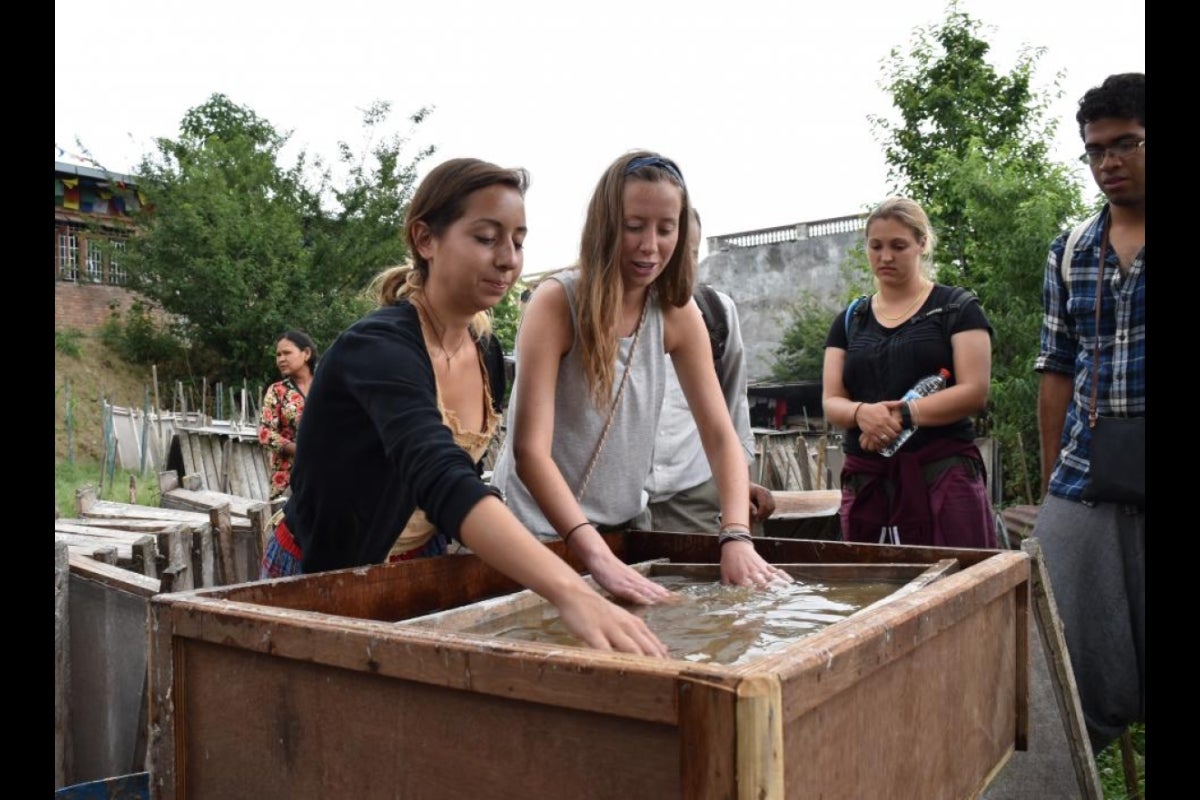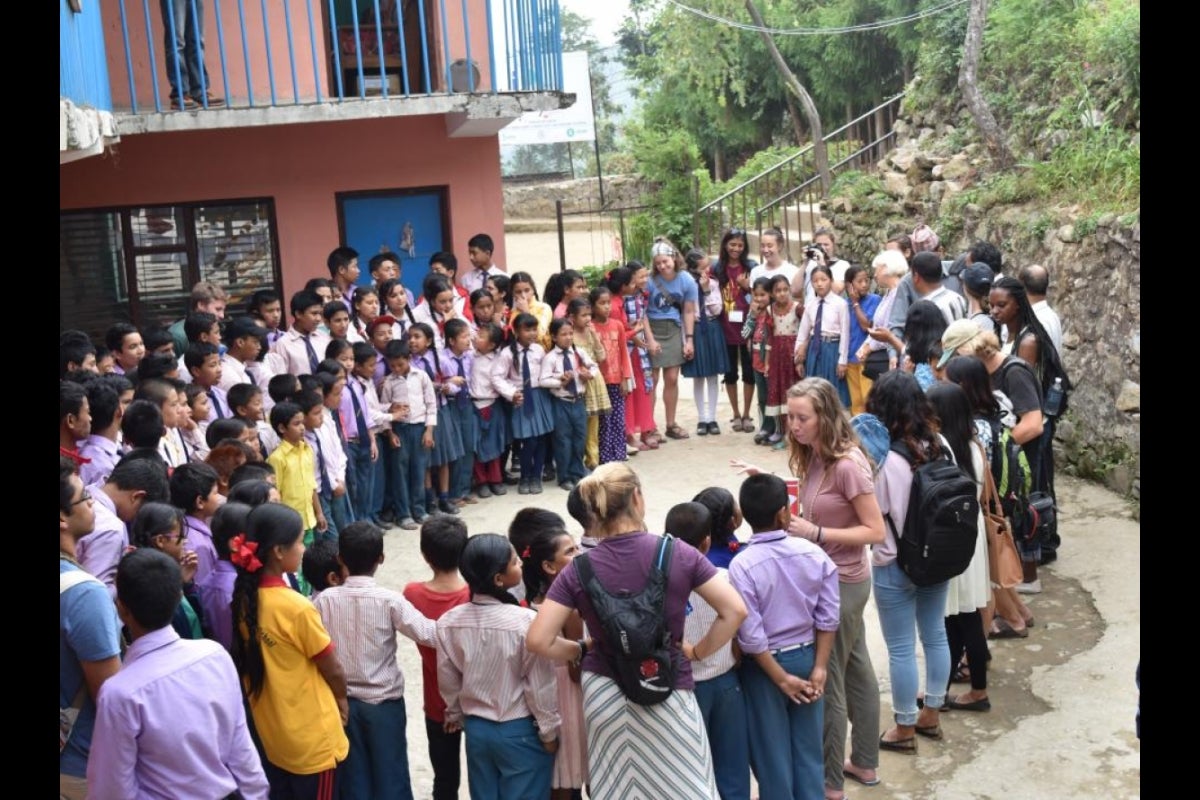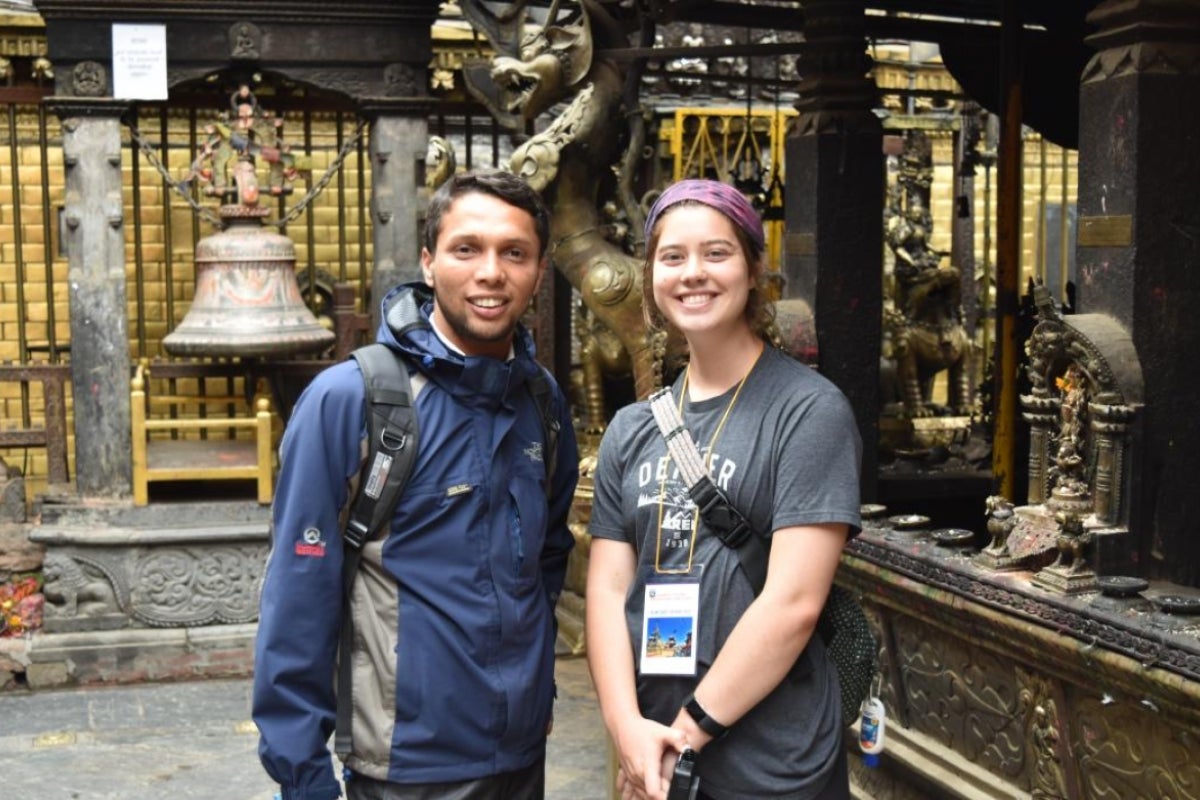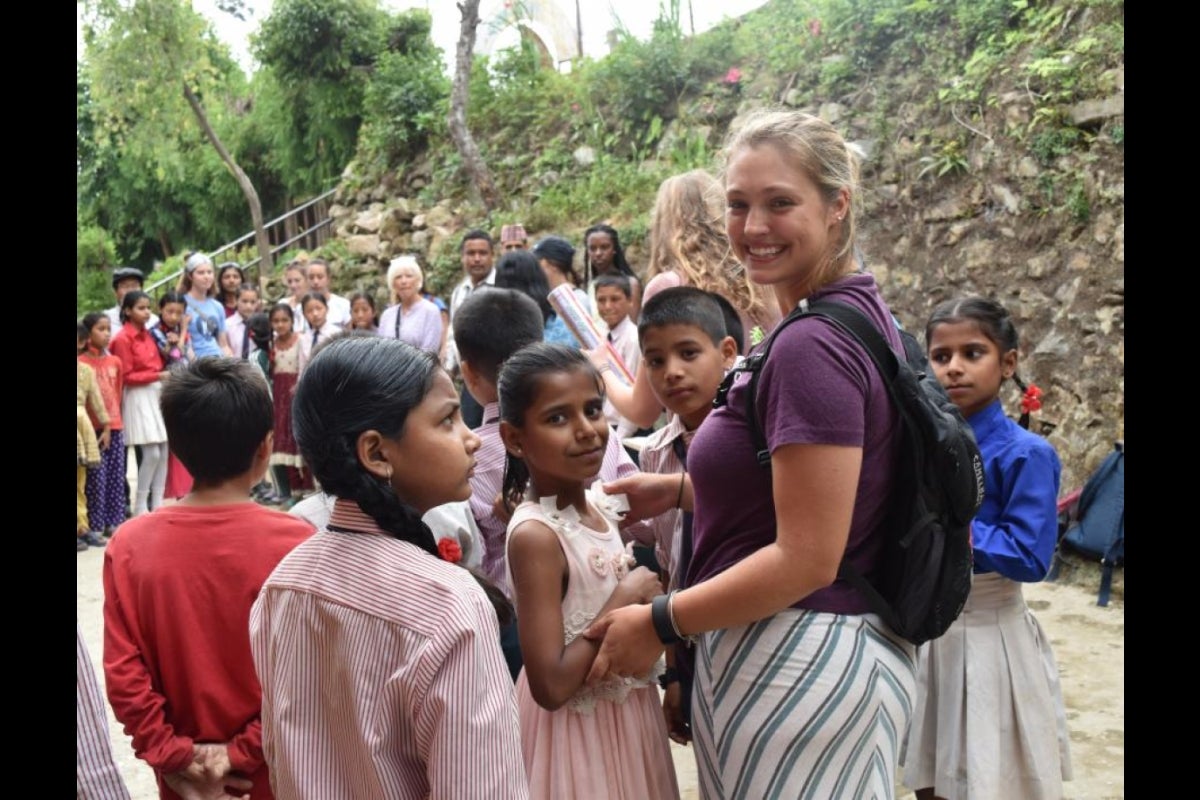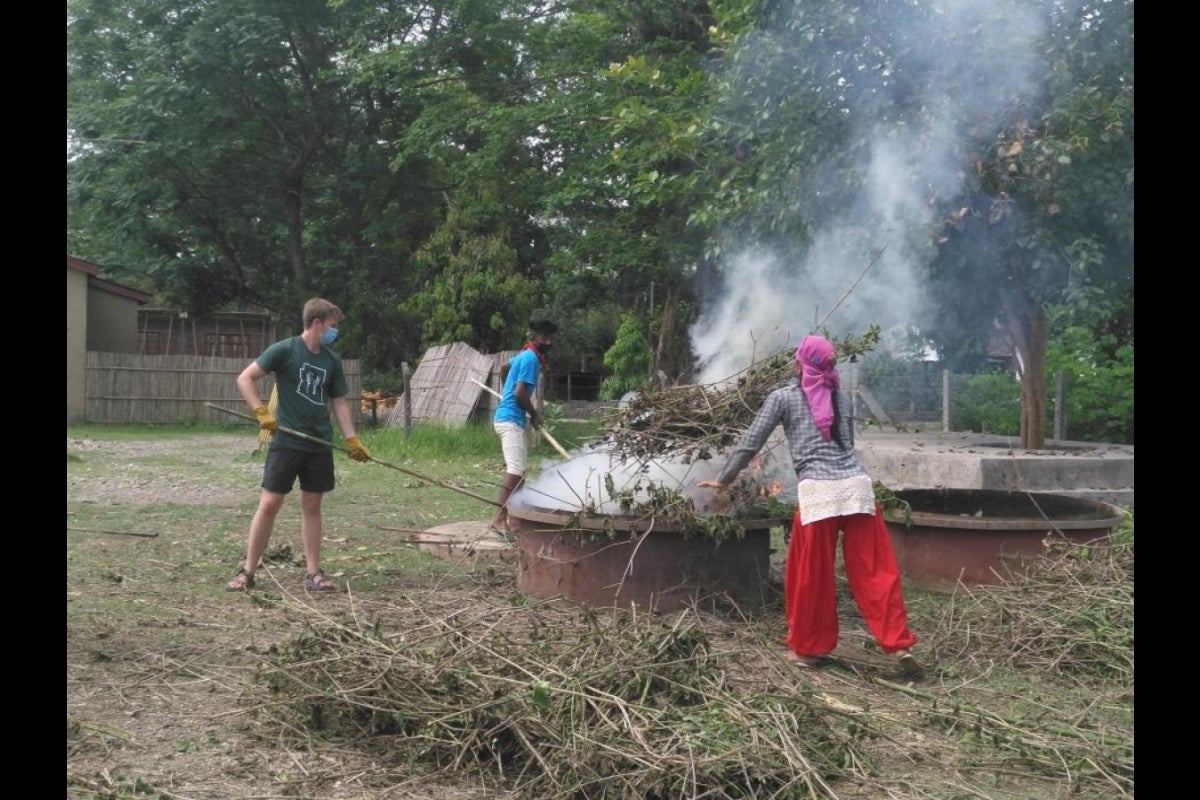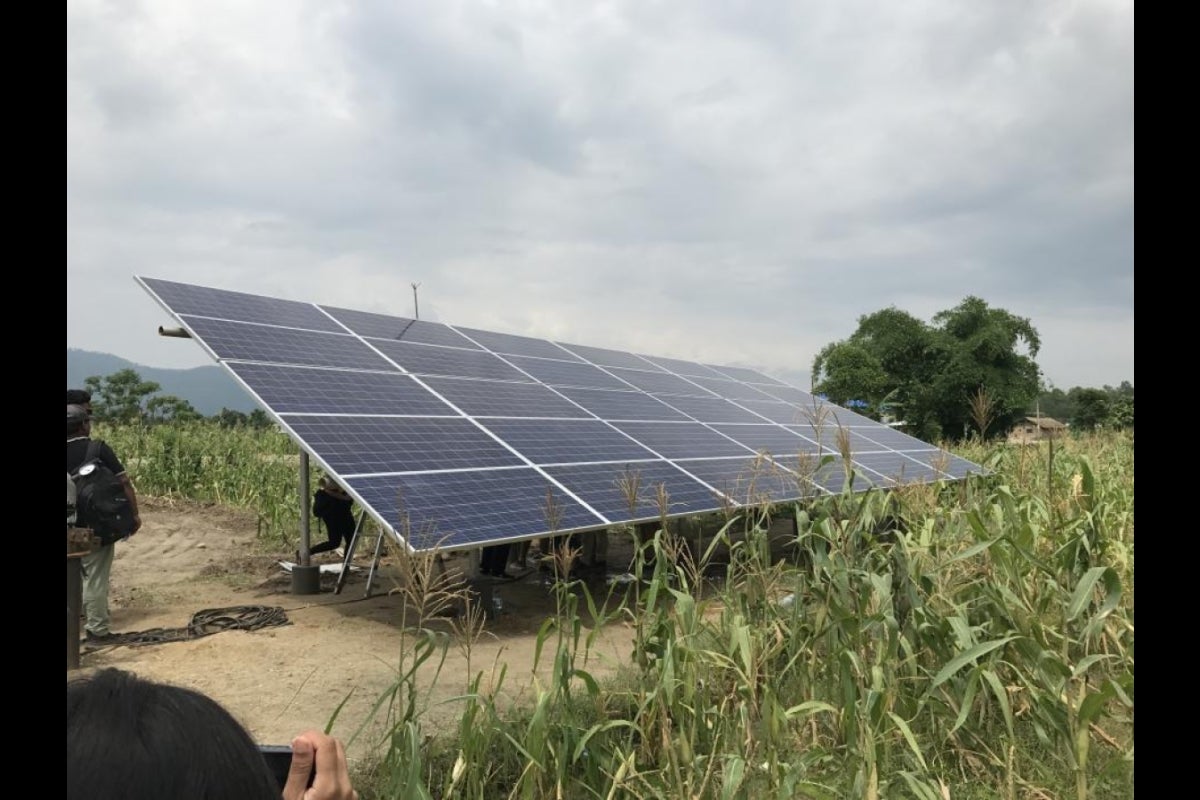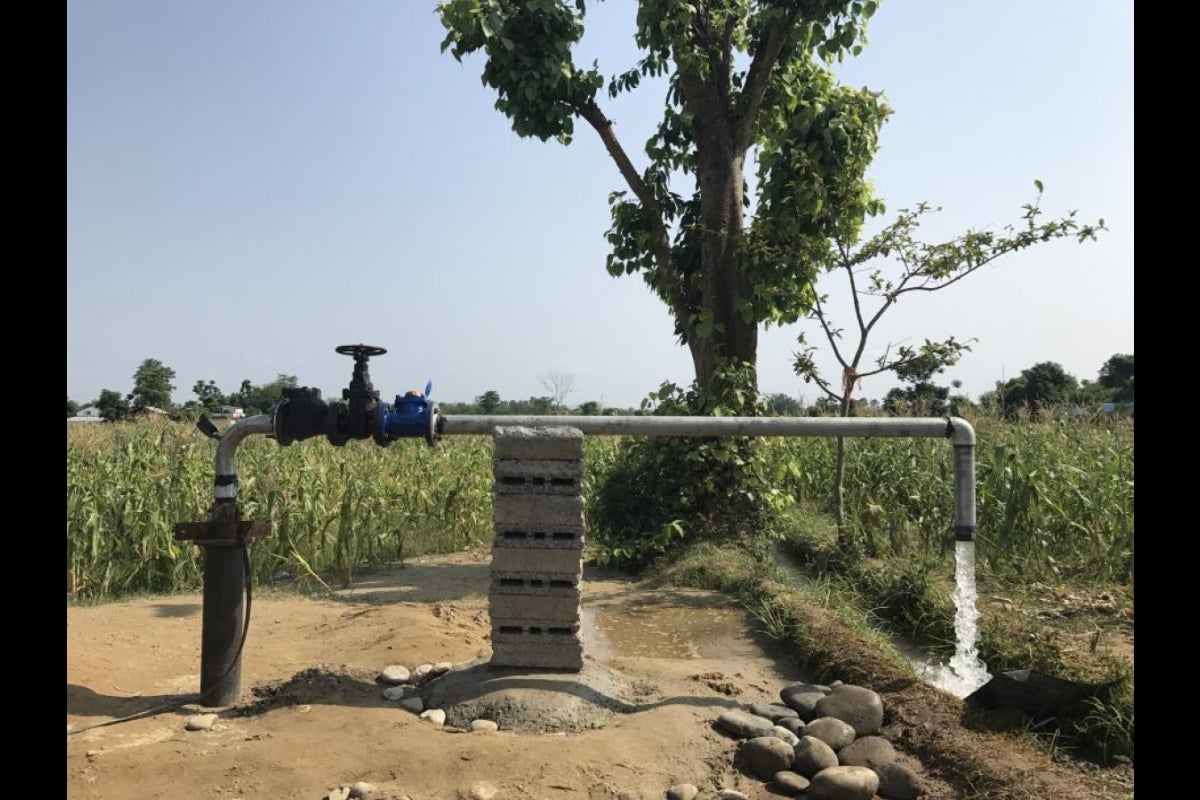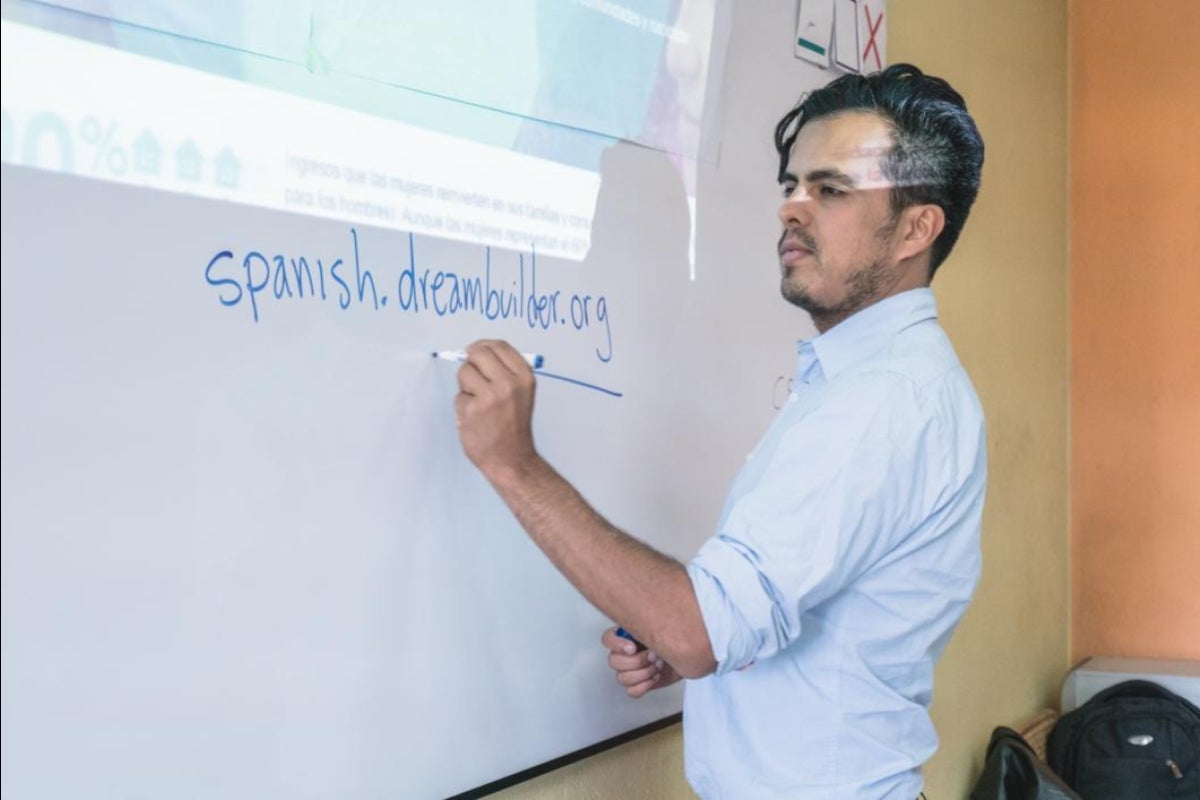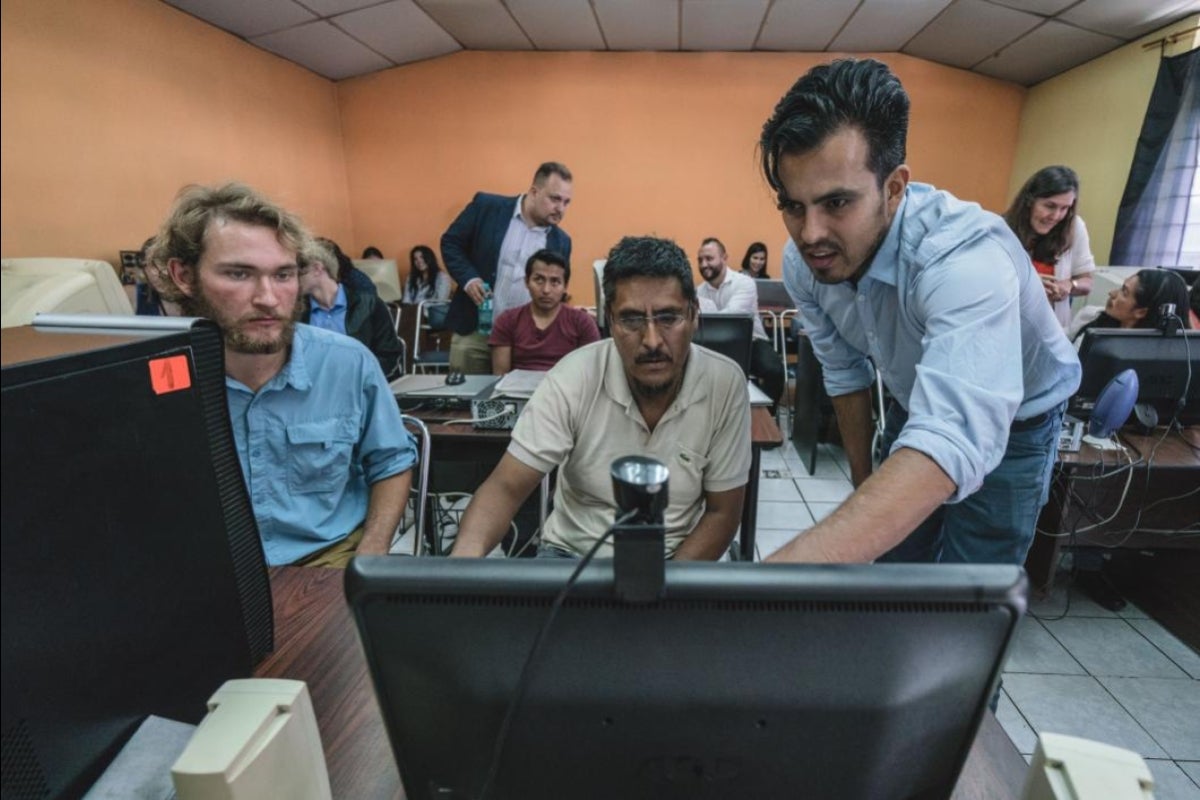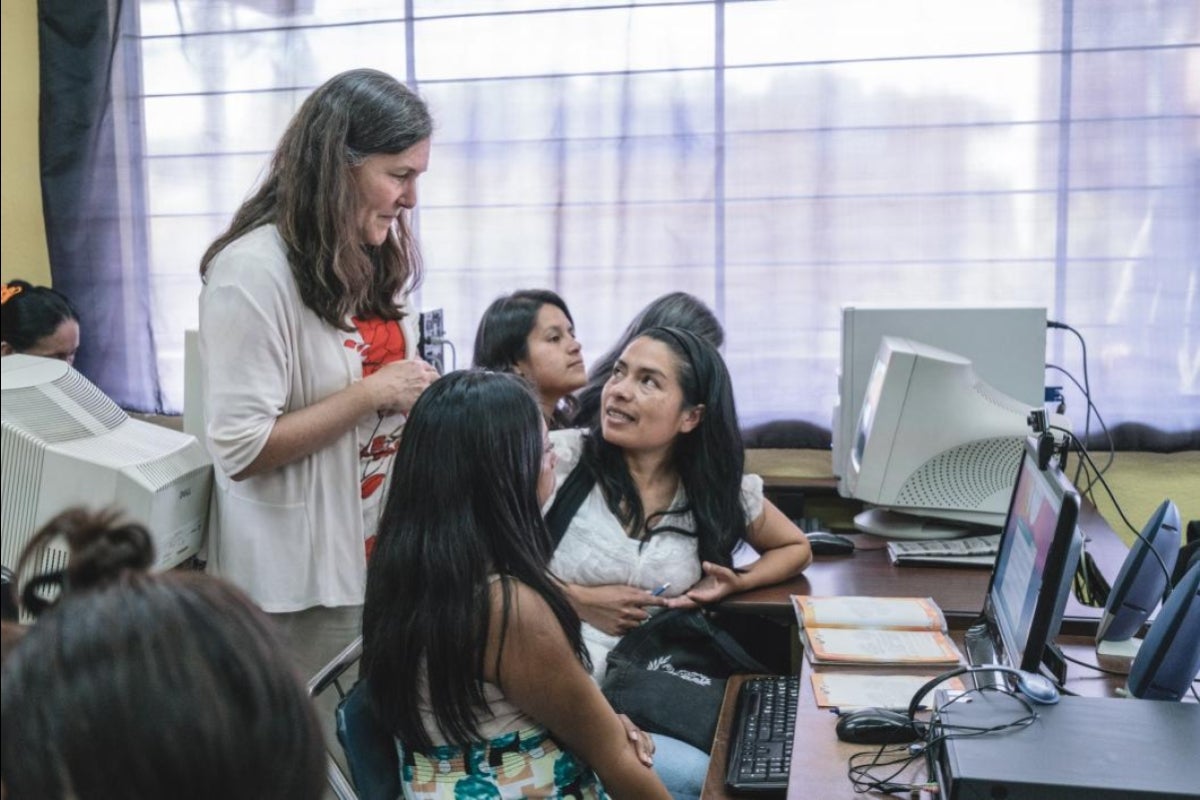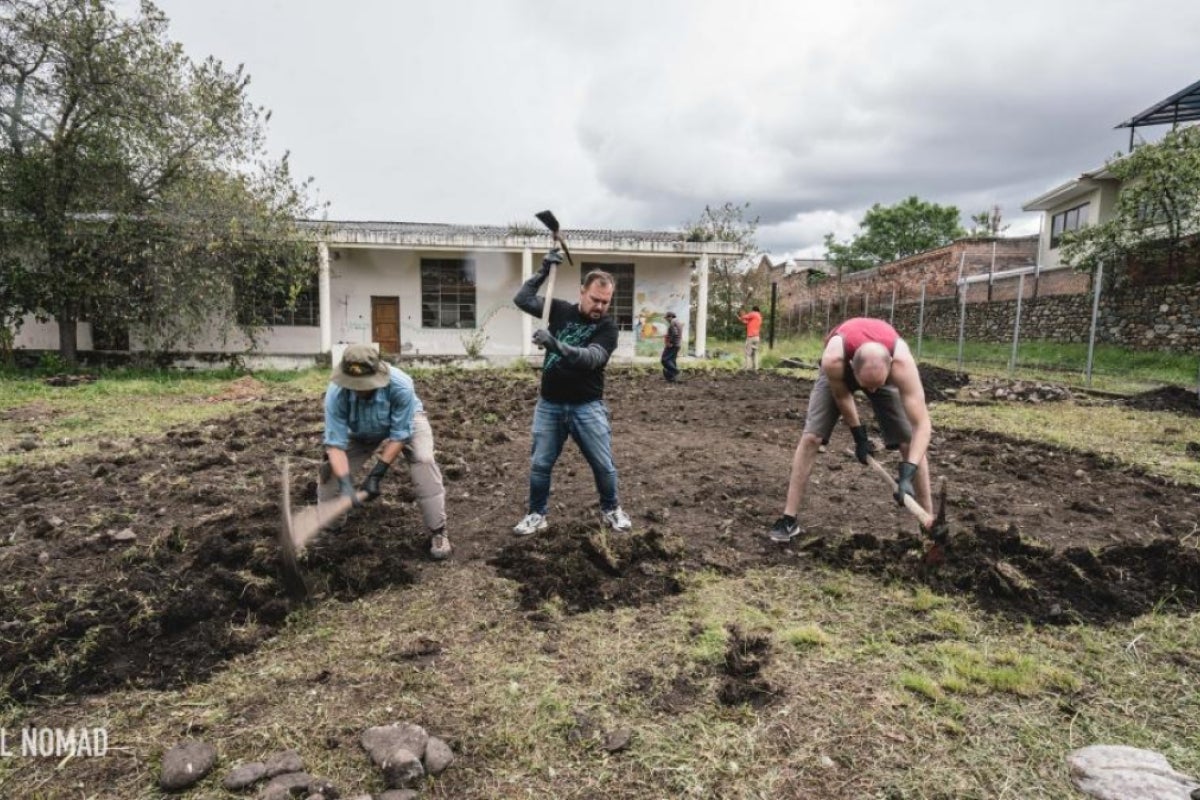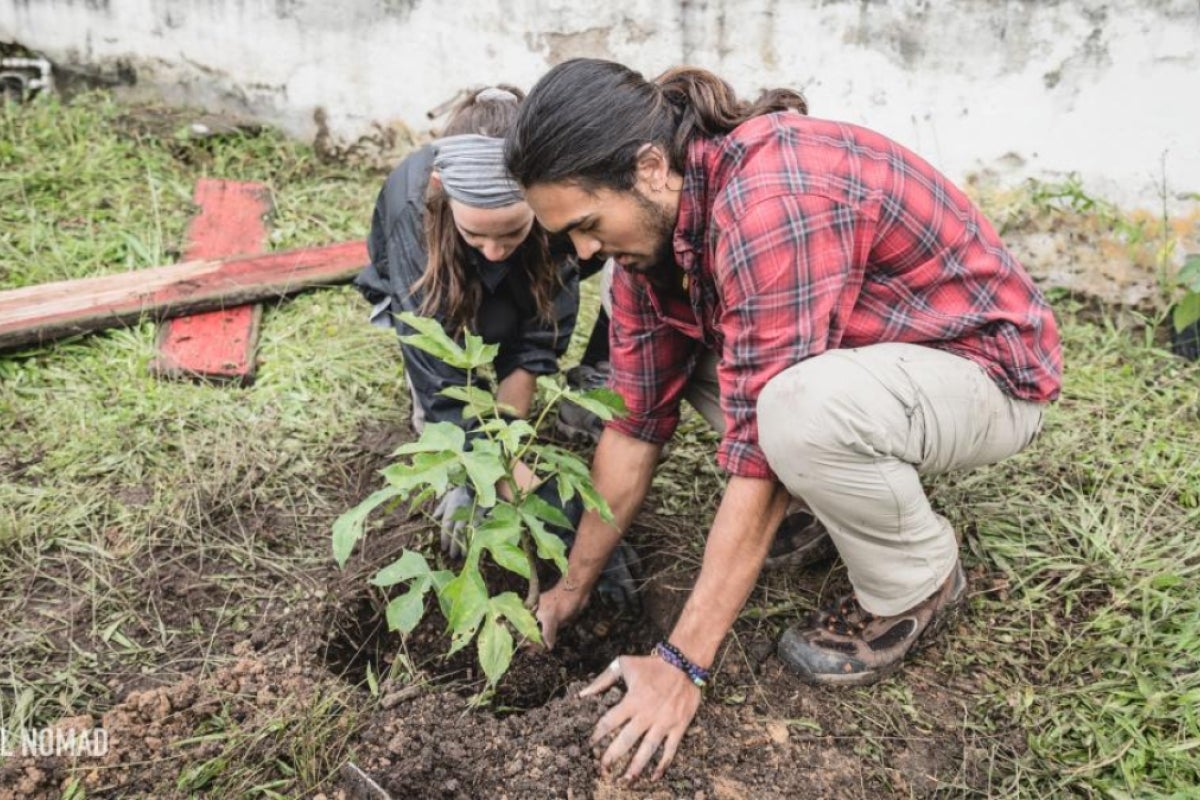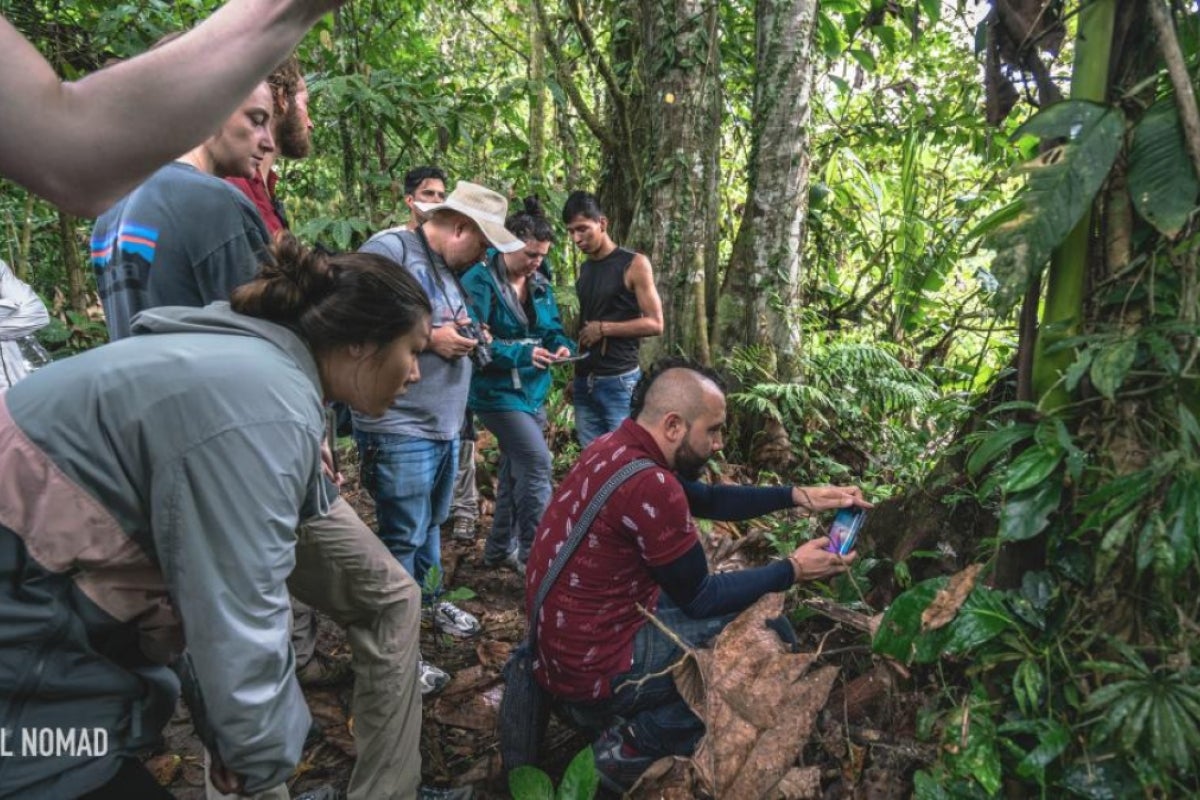ASU students, faculty gain insights, create impact in Nepal, Ecuador

Students explore in Tena, located in the Amazon region of Ecuador.
Study abroad programs give participants — faculty and students alike — an opportunity to learn alongside others in order to understand cultures different from our own, gain valuable insights, challenge our assumptions and contribute to the betterment of the communities we visit.
Students and faculty from Arizona State University's School for the Future of Innovation in Society traveled to Nepal and Ecuador this summer to engage culturally with host communities, broaden their worldviews, and roll up their sleeves to make a lasting impact. Each program had specific learning goals and a final project tailored to the experiences of each student.
With crucial support provided by the Walton Sustainability Solutions Initiatives and ASU’s School of Sustainability, participants learned first-hand about social justice, capacity building, entrepreneurship, and community empowerment.
Students from the Ira A. Fulton Schools of Engineering — including The Polytechnic School, the School of Sustainability, the College of Liberal Arts and Sciences, and Global Resolve participated in these cross-disciplinary projects with SFIS.
Nepal
Nalini Chhetri, clinical associate professor and assistant director at School for the Future of Innovation in Society, and Netra Chhetri, associate professor at the school and senior sustainability scientist at the School of Sustainability, led two groups of students from multiple disciplines, colleges and schools to various regions in Nepal.
Both groups included master’s students from Tribhuvan University, the largest university in Nepal, which turned out to be one of the best aspects of the collaborative peer learning experience, according to the ASU students.
With Chhetri’s guidance, students learned first-hand about global best practices in sustainable development. The group visited with people from indigenous communities who are successfully earning livelihoods while protecting the buffer zone areas of the national parks in the region — the home of Bengal tigers and one-horned rhinos — by instituting their own societal governance systems.
Chhetri and her students met with successful farmers, both men and women, who practice organic but profitable farming such as vegetable growing, bee keeping, and an organic coffee plantation. Her group also installed a photography exhibit at Tribhuvan University.
The homestays, site visits and expert seminars in Nepal brought participants face to face with new ways of thinking, feeling and living, Chhetri said.
“The experience of learning about new cultures and confronting new contexts, especially in developing countries, is invaluable for our students,” she said.
Netra Chhetri’s group outfitted community members in Nepal’s Nawalparasi district with several locally engineered pyrolysers, which are large kilns used to reduce organic matter — in this case, an invasive plant species — to biochar, a usable fuel, fertilizer and filtration resource that can be sold for profit.
The group also installed a solar-powered irrigation system that pumps water from a depth of 157 feet, providing local farmers with access to reliable water year-round, including the ability to grow out-of-season crops that sell at a higher price point.
“This was truly project-based,” Chhetri said. “The students worked with community members and experts from a local company that distributed the biochar, and then implemented the project design themselves, collecting research data in the process.”
Students even brought samples of the biochar home to continue to analyze it.
“Now, we’re trying to help the company scale this and improve the quality,” Chhetri said. He hopes the process will result in activated charcoal, which could filter water and be sold in retail stores, providing a major boost to the community’s economic security.
“This has been the most satisfying project I have done since coming to ASU,” he said.
Ecuador
In Ecuador, Mary Jane Parmentier, clinical associate professor and chair of the Global Technology and Development program, and Carlo Altamirano, a doctoral candidate in the Human and Social Dimensions of Science and Technology program, introduced the group to several varieties of social entrepreneurships, including the solidarity economy model. The trip acquainted students with multiple economic empowerment strategies in an environment where local traditions and culture compete with the challenges brought on by globalization.
Parmentier’s students stayed with families in the city of Cuenca for five nights. Students also visited the town of Tena in the Amazon region. They stayed in lodges in Tena with no electricity, which included the occasional encounter with “big black tarantulas,” the students reported. They learned about the Andean knowledge system, visited the Isla de la Plata, and even met Balthasar Ushka, the last Iceman of the Chimborazo.
Parmentier’s groups led seminars on social entrepreneurship using the bilingual Dreambuilder programs, developed at Thunderbird School of Global Management, at a women’s vocational training program in Quito — Ecuador’s capital, and to business students at the Technical University of Ambato.
Students also visited two Ecuadorean universities, the Catholic Pontifical University of Quito and Yachay Technical University, to learn about the government’s initiative to foster science and technology research and teaching for national development.
They also spent three days working with the Intensive Ambulatory Therapy program at the Health Center of Cuenca to build a healing garden at an outpatient medical center for adults recovering from addiction.
While students from all three groups were assigned research papers, some of the students in the Nepal group expressed what they had learned through less traditional formats, such as photo essays and poetry. Parmentier noted that many of the research questions her students developed before the trip to Ecuador changed just prior to turning in their final assignments.
“Some of the students realized their initial questions were naïve,” Parmentier said. “This kind of experience succeeds when it overturns assumptions. That’s hard to get across when you don’t get out of your comfort zone.”
The great advantage of study abroad programs is the opportunity to engage culturally with people and places students have not encountered before. Yet, study abroad is really a “learning community abroad,” Parmentier said. And it’s not just for students.
“It’s made up of students and faculty, and we’re all curious, we’re all learning,” she said. “We all benefit from each other’s questions.”
More Science and technology

ASU graduate student researching interplay between family dynamics, ADHD
The symptoms of attention deficit hyperactivity disorder (ADHD) — which include daydreaming, making careless mistakes or taking…

Will this antibiotic work? ASU scientists develop rapid bacterial tests
Bacteria multiply at an astonishing rate, sometimes doubling in number in under four minutes. Imagine a doctor faced with a…

ASU researcher part of team discovering ways to fight drug-resistant bacteria
A new study published in the Science Advances journal featuring Arizona State University researchers has found…
